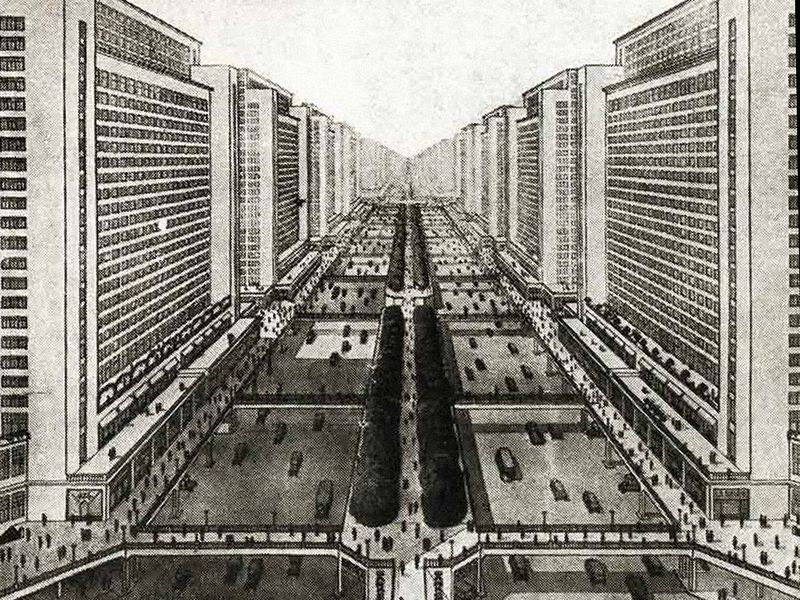In the web magazine Real Life, David A. Banks offers a brief history of urban planning as a discipline, tracing its utopian origins, its taming institutionalization, and its current focus on data and technology. Banks argues that urban planning needs to return to its roots, imagining cities as “the stages that society plays out on” rather than mere engines of capitalism. Here’s an excerpt:
Today, as corporate data monopolies and governments headed by strongmen remake society in their image, we find comfort in an idealized past. But in idealizing the brownstone or the industrial loft we lose sight of their embedded politics: the sorts of capitalist societies that these buildings were meant to house. In so doing we fail to do the hard work of re-imagining the city for a new society.
Charles-Édouard Jeanneret, better known as Le Corbusier, liked to call homes “machines to live in” and designed that way: highly engineered, purpose-built buildings that left little room for the messiness that we associate with urban life. Mumford, in his two-volume Myth of the Machine , called complex societies “megamachines,” comprising practices, inventions, and human organizations. Hidden within this metaphor is the implication that human habitats can be perfected and driven towards something. It is a profoundly ambitious idea full of both avarice and opportunity, fascism and communism.
The myth that we could build a machine worth living in — a perfectly efficient system that provided for every need without imposing a dehumanizing level of uniformity — doesn’t seem possible anymore. A modest two miles of track expansion to the New York City subway is hailed by the governor as something akin to a moon landing while the over 600 miles of existing track crumbles and burns. Fast-growing cities like Accra, Ghana and Lagos, Nigeria are facing the same problems of squalor, traffic and pollution that London and Chicago experienced a hundred years hence, with the added challenges of fine-grain control by American, European and Chinese technology firms seeking new “smart city” technology markets. Such systems do more to render the city more visible to administrators — simplifying complicated ideas like “happiness” into a series of numbers readable on a dashboard — than tangibly change the everyday lives of citizens. We’re getting further away from the original intentions of urban planning every day.
Image: Le Corbusier’s vision for “The Radiant City.” Via Smithsonian Magazine.
